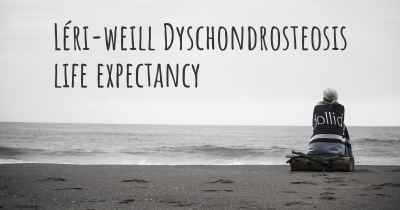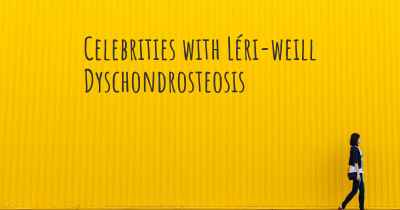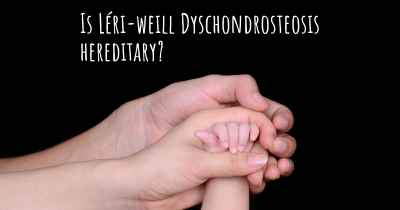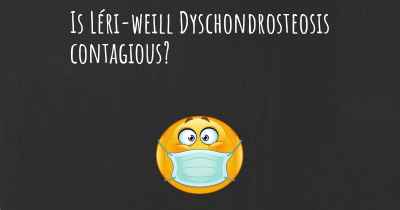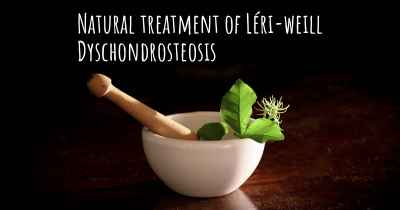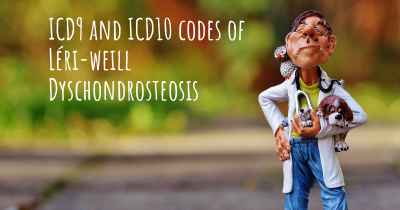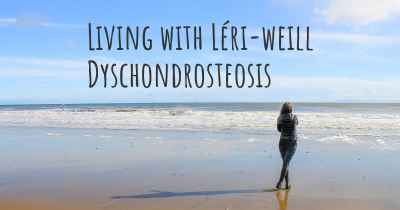What is the history of Léri-weill Dyschondrosteosis?
When was Léri-weill Dyschondrosteosis discovered? What is the story of this discovery? Was it coincidence or not?
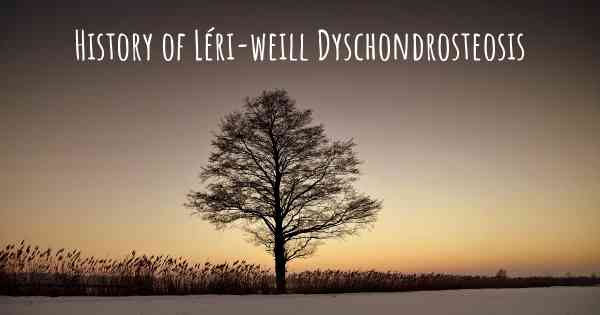
Léri-Weill Dyschondrosteosis (LWD) is a rare genetic disorder that affects bone growth and development. It was first described by French physicians Pierre Léri and Maurice Weill in 1929. LWD primarily affects the growth plates, which are areas of cartilage at the ends of long bones that are responsible for bone growth during childhood and adolescence.
The main characteristic of Léri-Weill Dyschondrosteosis is short stature. Individuals with LWD typically have short arms and legs, resulting in a shorter overall height. This condition is more common in females than males, and the severity of the symptoms can vary widely between individuals.
One of the key features of LWD is the abnormal development of the bones in the forearm, specifically the radius and ulna. The radius, which is the larger bone on the thumb side of the forearm, may be shorter and curved. The ulna, the smaller bone on the pinky side, may be longer than usual. This abnormal bone development can lead to a characteristic forearm deformity known as "Madelung deformity."
Another important aspect of Léri-Weill Dyschondrosteosis is the involvement of the growth plates in the legs. The growth plates in the lower legs, specifically the tibia and fibula, may also be affected. This can result in a condition called "mesomelic shortening," where the middle segment of the leg bones is shorter than normal. As a result, individuals with LWD may have a characteristic "bow-legged" appearance.
In addition to the skeletal abnormalities, individuals with LWD may also have other associated features. These can include a short neck, a broad chest, and a relatively short trunk. Some individuals may also have mild joint laxity, which can lead to joint pain or instability.
Léri-Weill Dyschondrosteosis is caused by mutations in the SHOX gene. This gene is located on the sex chromosomes and plays a crucial role in bone development. Mutations in the SHOX gene can disrupt the normal growth and maturation of the growth plates, leading to the characteristic features of LWD.
Diagnosis of Léri-Weill Dyschondrosteosis is typically based on clinical features and radiographic findings. Genetic testing can confirm the presence of mutations in the SHOX gene and help differentiate LWD from other similar conditions.
Management of Léri-Weill Dyschondrosteosis is primarily focused on addressing the specific symptoms and complications associated with the condition. This may include interventions such as physical therapy to improve joint stability and mobility, orthopedic interventions to correct skeletal deformities, and growth hormone therapy to improve height in some cases.
In conclusion, Léri-Weill Dyschondrosteosis is a rare genetic disorder characterized by short stature, abnormal bone development in the forearms and legs, and other associated features. It is caused by mutations in the SHOX gene and can be diagnosed through clinical evaluation and genetic testing. Management of LWD aims to address specific symptoms and complications to improve quality of life for affected individuals.
